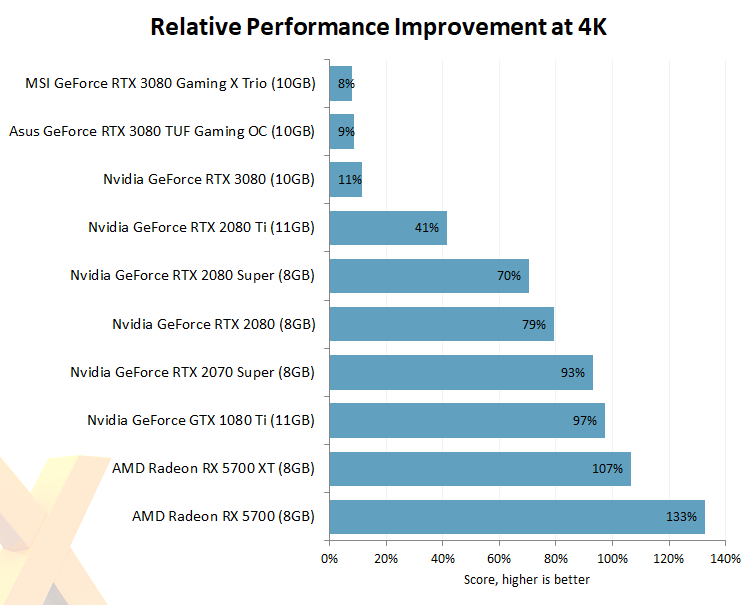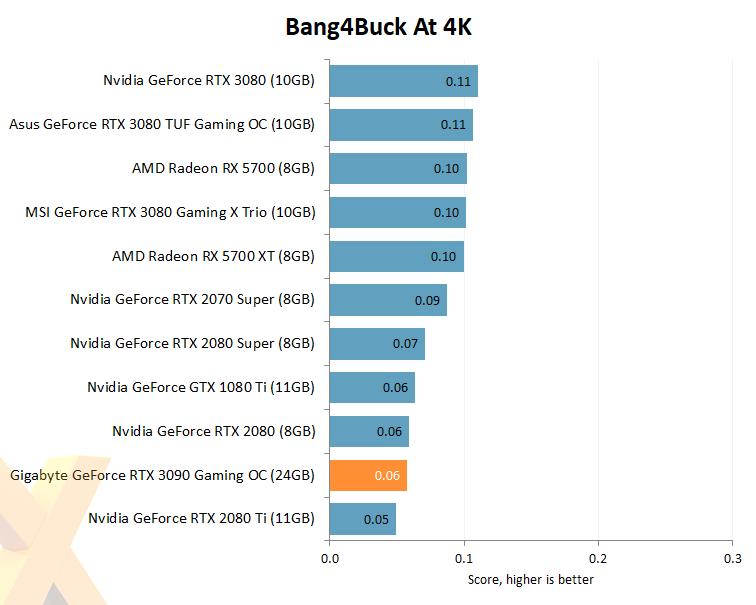Comparative Performance, Energy Efficiency and Value
That's a lot of numbers. We can distill the relative performance of the Gigabyte GeForce RTX 3090 Gaming OC card by looking at how much faster it is than the competition through evaluation of its percentage lead at 4K. The following graph averages its leads across seven applications - six games and 3DMark Time Spy Extreme - to give you an at-a-glance feel for the extra horsepower.

Remember we said the lead over the Nvidia GeForce RTX 3080 FE was between 10-15 percent. It's actually 11.6 percent, where the average is dragged down by popular titles such as Civilization VI: Gathering Storm that show little gain.
More pertinently, the Gigabyte card is less than 10 percent faster than either the Asus or MSI GeForce RTX 3080 OC models, and that is really telling in itself.
We can also tease out rudimentary comparative value and energy efficiency by looking at performance and evaluating it against power consumption and price.

To get these figures we divide the Gears 5 4K average framerate - a well-coded game that scales well - by the peak graphics power consumption seen in GPU-Z, which tallies closely to each card's declared TDP.
Faster performance is allied to higher power. The two combine to give the RTX 3090 Gaming OC a solid perf-per-watt metric.

This graph divides the same average 4K framerate by the dollar SRP for each card. That $1,500 (£1,500) price hammers the RTX 3090.









